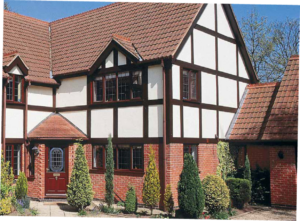
Top Double Glazing Installation
Add a review FollowOverview
-
Founded Date September 26, 1924
-
Sectors Pomoćni poslovi
-
Posted Jobs 0
-
Viewed 22
Company Description
How To Get More Results Out Of Your Double Glazing Materials
Understanding Double Glazing Materials: A Comprehensive Guide
Double glazing has become a standard practice in modern construction and home renovation, largely due to its undeniable benefits in energy performance, soundproofing, and overall convenience. At the core of this innovation lies a selection of materials, each contributing distinct benefits to the double glazing phenomenon. This article explores the different materials used in double glazing, their properties, benefits and drawbacks, and how they affect the overall performance of windows.

What is Double Glazing?
Double glazing is a type of insulation that includes two panes of glass separated by a space, typically filled with air or inert gas. This configuration serves a main function: to lower heat transfer in between the exterior and interior of a structure. As a result, double-glazed windows assist maintain warmth during winter season and keep areas cooler throughout summer.
Advantages of Double Glazing
- Energy Efficiency: Minimizes heat loss, decreasing energy costs.
- Sound Insulation: Reduces outside noise, boosting convenience.
- Condensation Reduction: Lesser condensation implies less danger of mold.
- Increased Security: Tougher than single-pane choices, offering higher defense against burglaries.
- Boosted Property Value: Homes with double glazing are often more enticing to buyers.
Typical Double Glazing Materials
1. Glass Types
The efficiency of double glazing is largely affected by the type of glass used. Below are the typical kinds of glass used in double glazing:
| Glass Type | Description | Advantages | Disadvantages |
|---|---|---|---|
| Float Glass | Fundamental glass, generally used in standard applications. | Cost-effective | Less insulation compared to Low-E glass. |
| Low-Emissivity (Low-E) | Glass coated with a thin metallic layer to show heat. | Excellent insulation, preserves natural light. | Greater initial expense. |
| Tempered Glass | Heat-treated glass that is more powerful and much safer. | More resilient, resistant to impact. | Can be more expensive due to processing. |
| Laminated Glass | Glass layers bonded with a plastic interlayer. | Deals security and UV protection. | Heavier and more pricey choices. |
2. Spacer Bars
Spacer bars are the products that separate the 2 panes of glass in a double-glazed unit. Various products can be used for this function:
| Spacer Bar Material | Description | Advantages | Drawbacks |
|---|---|---|---|
| Aluminium | Light-weight and stiff however conductive. | Resilient and cost-efficient. | Can cause condensation due to heat transfer. |
| PVC-U | A plastic choice, less conductive compared to aluminum. | Good thermal efficiency. | Might not be as long lasting as aluminum. |
| Warm Edge Technology | Often consists of a composite product. | Lowers thermal bridging, improving performance. | Usually more expensive. |
3. Gas Fills
The space in between the panes of glass can be filled with air or specific gases to enhance insulation.
| Gas Type | Description | Advantages | Disadvantages |
|---|---|---|---|
| Air | Regular air without any special homes. | Affordable and sufficient for numerous applications. | Lower insulation than gas-filled units. |
| Argon | Inert gas that is denser than air. | Outstanding thermal insulation. | More pricey than air but typically justified. |
| Krypton | Heavier and more effective than argon. | Best insulation of the gas options. | Much greater expense and requires specialized methods. |
Elements Influencing the Choice of Double Glazing Materials
When picking materials for double glazing, several elements should be considered:
- Climate: The local climate has a significant impact on energy effectiveness, dictating the requirement for specific glass types or gas fills.
- Spending plan: Initial costs might surpass long-lasting benefits. Property owners should stabilize upfront expenditures with possible cost savings.
- Visual Preference: Different frames and glass types offer a range of visual designs that need to match the architecture of the home.
- Building Regulations: Local structure codes may dictate specific materials, requiring adherence to these standards.
Upkeep of Double Glazed Units
Beyond the installation of Double Glazing Replacement glazing units, routine upkeep is essential for durability and efficiency. Here are a couple of maintenance ideas:
- Regular Cleaning: Use proper cleaners for both glass and frames to avoid accumulation of dirt and gunk.
- Check Seals: Periodically check window seals for damage or wear, as compromised seals can dramatically reduce insulation effectiveness.
- Condensation Control: Monitor for condensation between panes, which might show seal failure and necessitate repair.
Regularly Asked Questions (FAQs)
Q: How long do double-glazed windows last?
A: Typically, double-glazed windows can last anywhere from 20 to 35 years, depending on the quality of materials and installation.
Q: Can I replace simply one pane of a double-glazed unit?
A: It is generally recommended to change the entire double-glazed unit for optimum performance, as changing just one pane can lead to mismatching insulation residential or commercial properties.
Q: Are double-glazed units more pricey than single glazing?
A: Yes, double-glazed units typically have a greater upfront expense due to innovative products and construction, but they frequently spend for themselves through energy savings.
Q: Will double glazing minimize sound pollution?

A: Yes, double-glazing efficiently reduces outside sound, making your living environment more tranquil.
Picking the right products for double glazing is a vital action in boosting energy efficiency, sound insulation, and the total comfort of a home. With different glass types, spacer bars, and gas fills readily available in the market, understanding these components can significantly affect performance. Property owners must consider their unique needs, preferences, and local aspects to attain the very best outcomes from their investment in double glazing technology. Complying with maintenance practices and staying informed about advancements in glazing materials will ensure long-lasting gain from this useful and necessary feature of contemporary architecture.